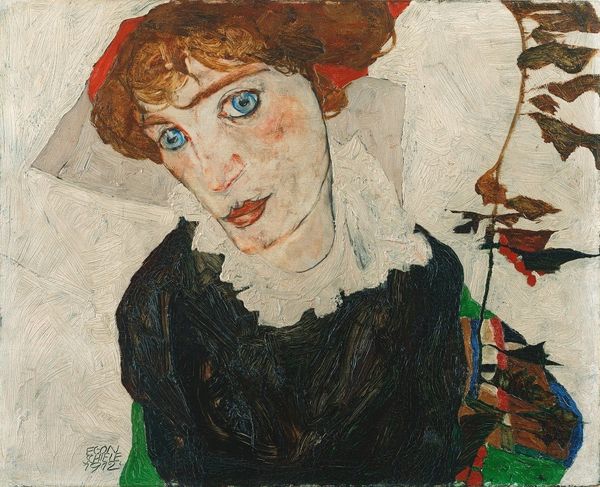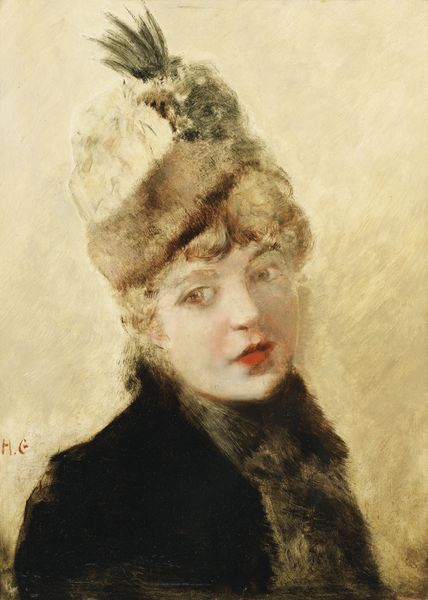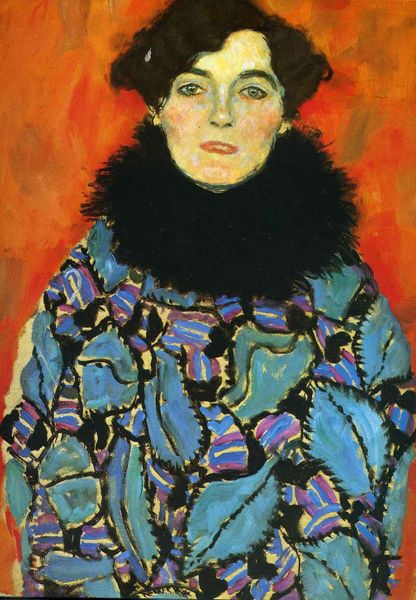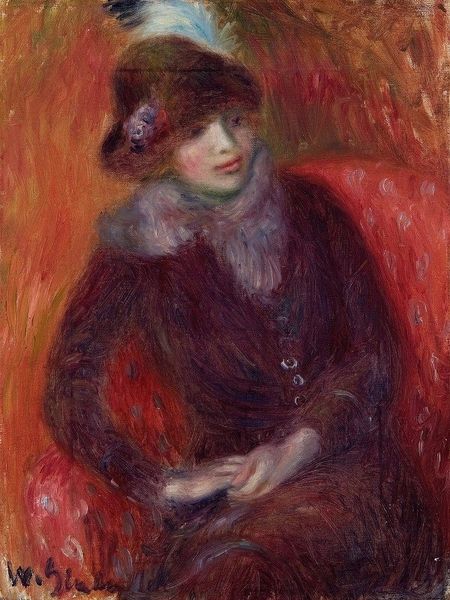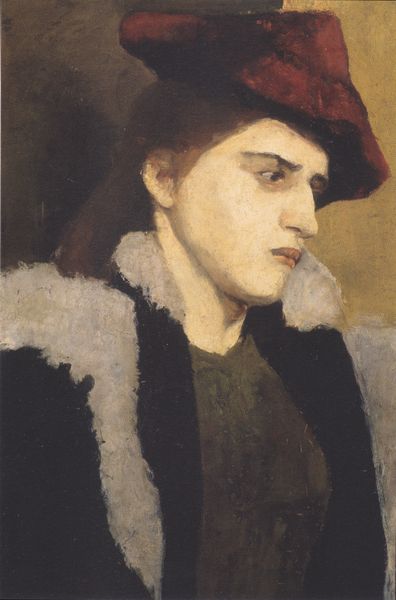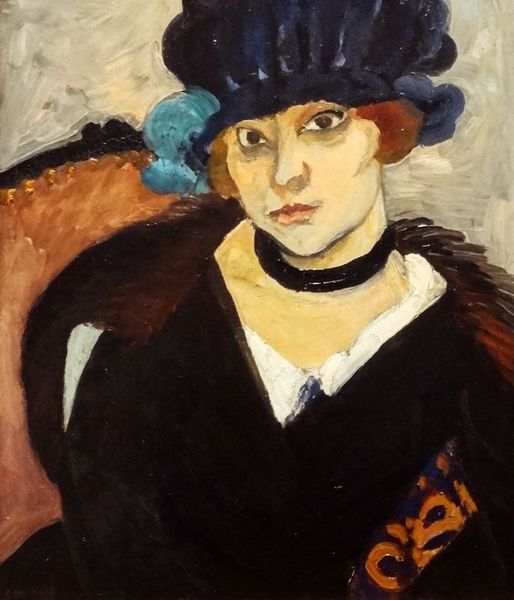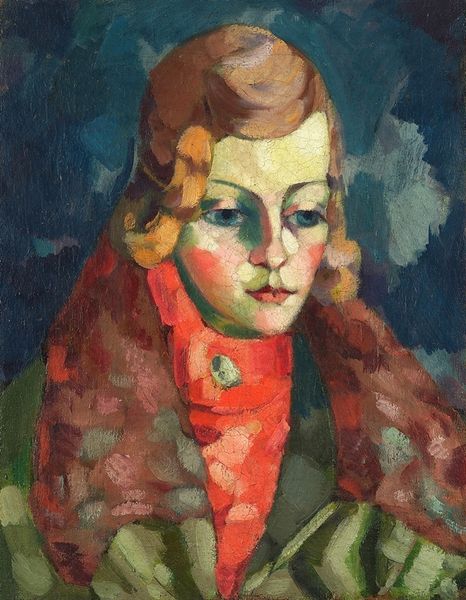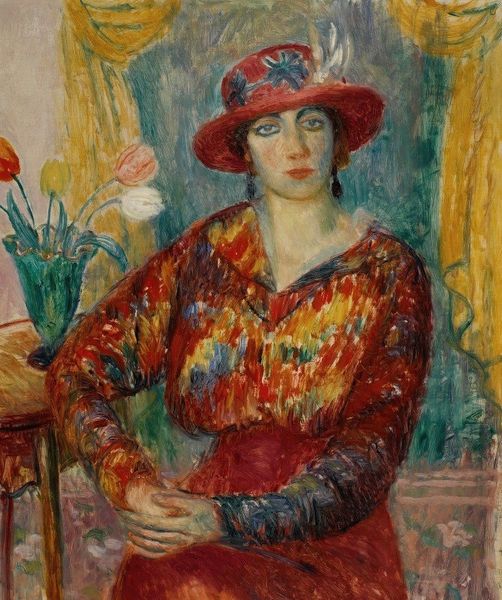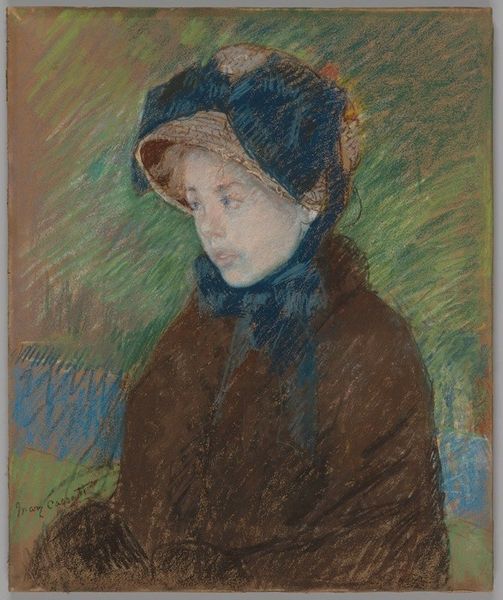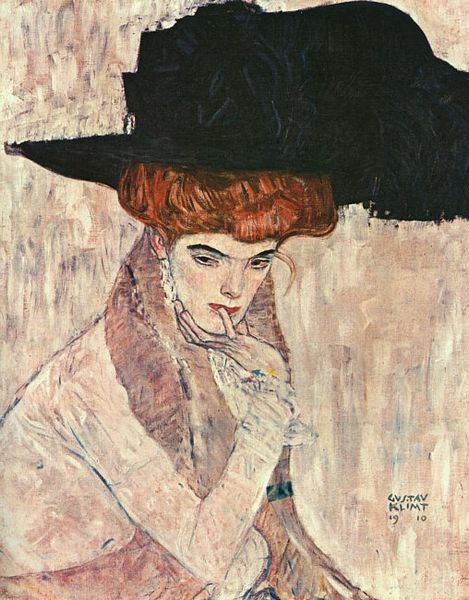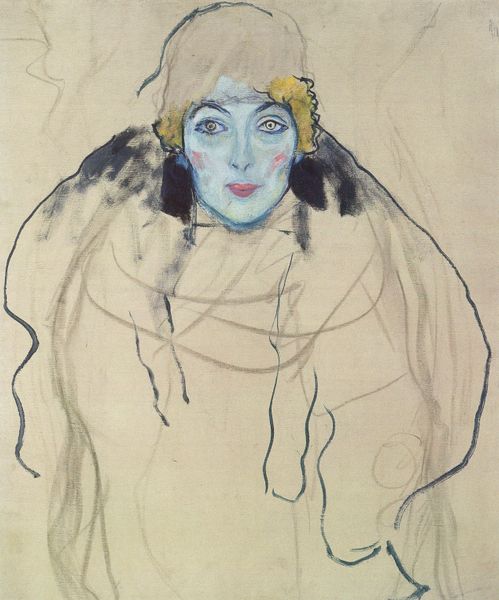
painting, oil-paint
#
portrait
#
self-portrait
#
painting
#
oil-paint
#
possibly oil pastel
#
oil painting
#
acrylic on canvas
#
underpainting
#
expressionism
#
watercolor
Copyright: Public Domain: Artvee
Editor: This is Egon Schiele’s 1912 painting "Porträt Ida Roessler," rendered in oil paint. I’m immediately struck by the subject’s melancholic gaze and how her features seem both delicate and harshly defined. What can you tell me about it? Curator: This portrait reflects Schiele's Expressionist style but also invites a deeper inquiry into the societal forces shaping portraiture at the time. Think about the Secession movement in Vienna; how artists aimed to break free from academic traditions to explore inner psychological states. Roessler's withdrawn expression reflects this pursuit. Have you considered the influence of psychoanalysis on artists like Schiele? Editor: That's interesting. I hadn't directly thought about psychoanalysis, but it makes sense given the focus on emotional expression. Were there specific social expectations impacting women's representation in art during this period? Curator: Absolutely. Portraiture served various social functions. For women, it often served to project respectability and convey social status. But here, Schiele challenges those conventions. Roessler’s intensity suggests a departure from the passive ideal. The rough brushwork mirrors the social and political turbulence bubbling beneath the surface in pre-war Vienna, don't you think? Editor: I can see that now. It's as if the painting itself is a rebellion against established norms, a visual manifestation of societal tensions. It almost anticipates the coming war. Curator: Precisely! Schiele captures not just an individual, but a specific moment in history. By pushing boundaries, he paved the way for future generations of artists who sought to question traditional representation. Editor: That’s insightful. It gives me a whole new perspective on the painting. I initially just saw a sad woman, but now I understand the deeper layers of societal commentary. Curator: Exploring art through historical context illuminates hidden dimensions. Next time, consider the art world dynamics when viewing pieces, not just what meets the eye.
Comments
No comments
Be the first to comment and join the conversation on the ultimate creative platform.
